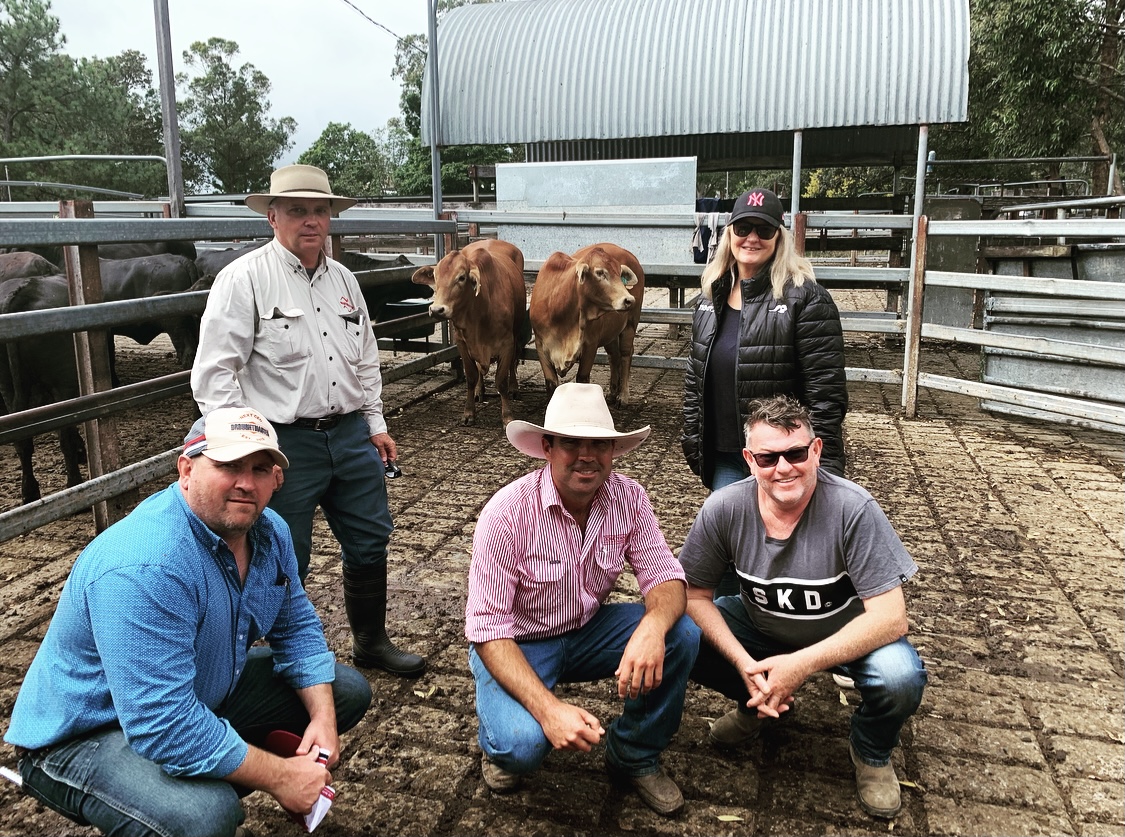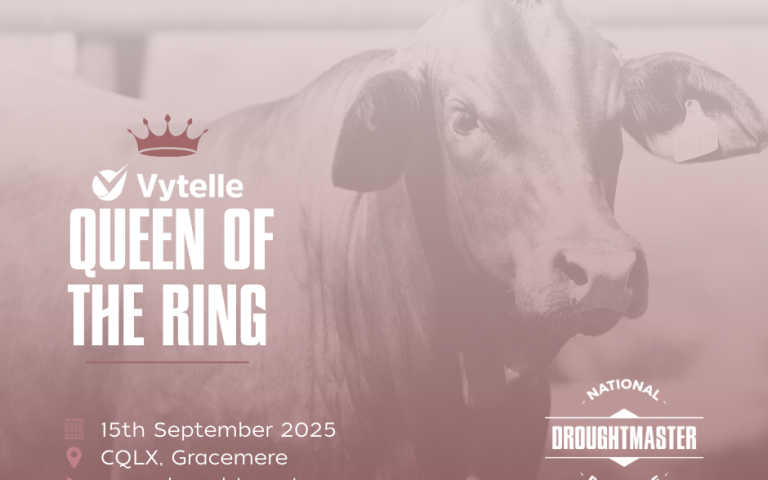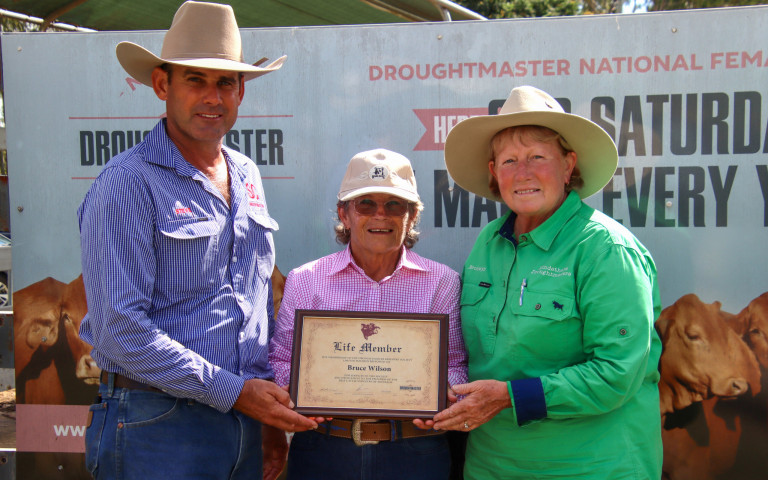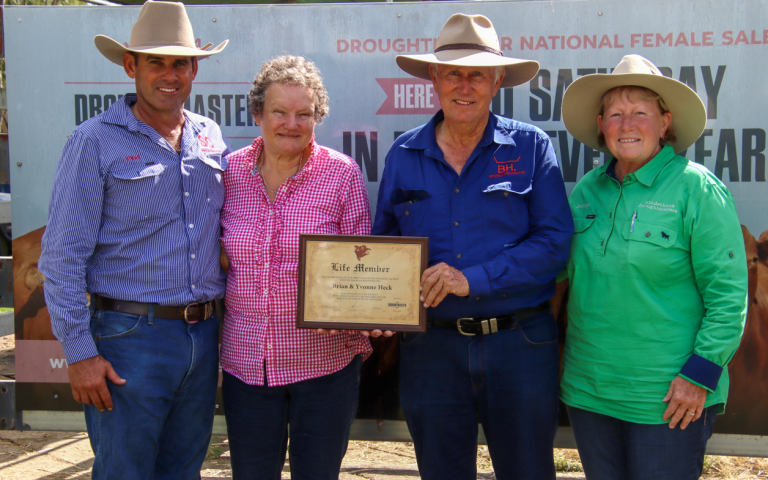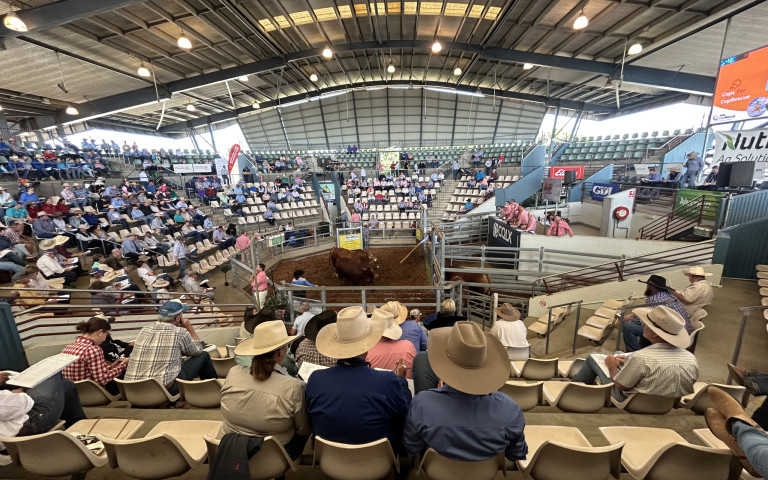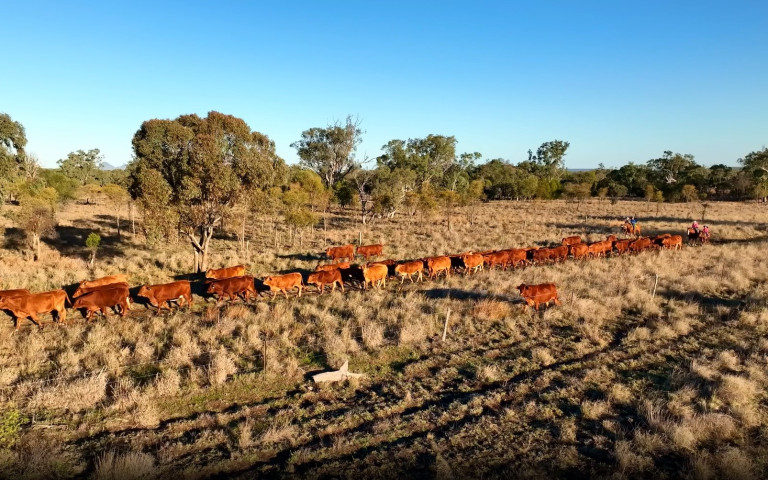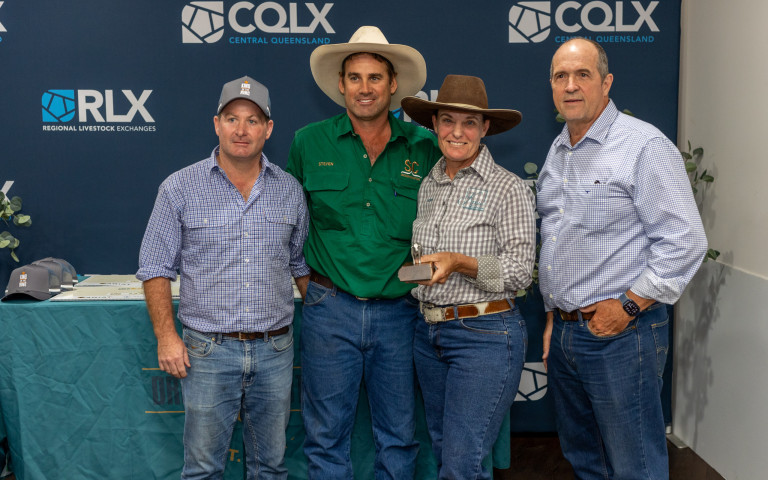Droughtie females hit the mark at Grafton
19 Apr 2023Experienced livestock agent Mitch Donovan knows good cattle when he sees them, but he also has the comfort of the market emphatically endorsing his assessment.
Through his agency Donovan Livestock and Property, Mr Donovan for the past two years has witnessed surging demand for Droughtmaster females at historic prices paid in the selling ring of the Grafton saleyards.
Last year’s Clarence Valley Select Female and Breeder Sale saw two pregnant commercial heifers originally bred from Todd and Naomi Heyman’s operation at Seelands via Grafton, and grown out by Don Morgan, Junction Hill, top the event and post a district record with a price tag of $5800 each.
Last month, the 2023 fixture saw Droughtmasters again take first class honours, with PTIC Jembrae heifers from Brett and Leanne Warne’s enterprise at Casino topping the PTIC and cow and calf categories of the annual sale at $4500.
“Two years in a row Droughtmasters have got the gold for the top price at our signature female sale,” Mr Donovan said.
“But it’s not just the big events where they shine; they achieve very strong results throughout the year and have done so for a very long time.
“It’s very pleasing to see beautifully bred Northern Rivers cattle appreciated and utilised by Northern Rivers cattlemen, who are buying excellent genetics to further advance the breed in this region.”
Stud and commercial breeder Brett Warne has previously remarked to Australian Community Media that the “magic of Droughtmasters” is their versatility.
“You can target the weaner market all the way through to the heavy export market all with the one breed,” he said.
“All you need do is some sire changing to target whatever market you are chasing.
“We always target that replacement female for the paddock or heavy feeder weight cattle and our bull selection happens around that.
“We never focus our breeding on elite stud genetics – we always focus on commercially-oriented, functional bulls, because that’s our bread and butter.”
While Mr Warne believes interest and demand for Droughtmaster has always been strong in NSW, these days the trend is for bigger numbers and bigger dollars paid for quality.
“I would say the demand for the Droughtmaster female has always been very strong. They are good mums, they mature into a moderately framed, to large style cow, always easy to handle and are reliable to get a calf out of,” Mr Warne said.
“I’d say I’m getting calls at least fortnightly from buyers looking for Droughtmaster females. And they don’t want to just buy 10, now they want to buy a deck or two decks at a time.
For nearly two decades, Mr Donovan has seen Droughtmaster demand increase, especially for females that local producers like to join to British or Euro terminal sires.
“We are a weaner factory here and those Droughtmaster females are terrific mothers, producing a lot of milk to bring on strong and healthy calves,” he said.
“Their adaptability to our country is outstanding. The crossbred article that comes from a Droughtmaster female and an Angus or Charolais bull is a very good cross that oozes quality and reliability.
“The progeny is just so marketable. You’re not going to go backwards if you move in that direction.”
As well as their physical conformation and performance in the paddock and on kill sheets, the Droughtmaster’s quiet temperament also plays a big role in their wide appeal, Mr Donovan said.
“It’s a major factor in our part of the world,” he said.
“We have plenty of doctors and town accountants who push the pen during the week, but on the weekends, they want some cows for their property and they want quiet ones.
“We also have older folk running smaller operations on their own who don’t fancy being knocked over in the yard or run up a fence.
“Droughtmasters are a popular choice for that reason. The consistency in the quality and docility of the breed ensures their reputation as quiet, compliant cattle is maintained.
“It explains why buyers can’t get enough of Droughties, especially the females in northern NSW.”
